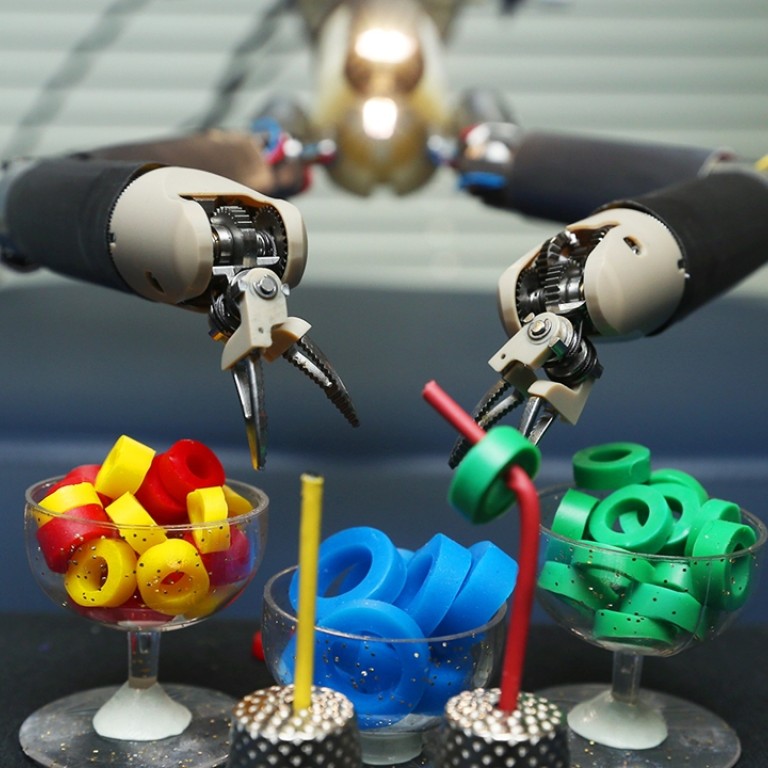
Hong Kong's world-first surgery robot: 'more precise, less invasive’, operates without cutting patient's body
System developed by HKU and PolyU researchers features tiny parts inserted via tubes and assembled inside patient’s body
The world’s first robot capable of performing abdominal surgery without cutting into the patient’s body has been jointly developed by University of Hong Kong and Polytechnic University researchers, paving the way for more precise yet less intrusive operations.
While use of the only currently available robotic system requires making multiple cuts in the body in order to insert robotic arms, the new system allows small robotic parts to be placed inside the patient via a tube inserted into natural openings such as the vagina or anus. The parts can then be assembled inside the body.
Instead of the straight arms used in current robots, the new design features joints similar to those in crab legs.
READ MORE: Meet your newest friend, nurse and carer – a robot who reads your moods and emotions
Professor Yeung Chung-kwong, a surgical professor from HKU, described using the robot as being similar to putting “a man’s upper arm into the [patient’s] body”.
Another advantage over the current system is that the robot provides doctors with haptic feedback when manipulating the robotic arms. The robot’s two cameras also provide a more panoramic view inside patient’s body.
The technology could be applied to abdominal procedures such as obstetric and urological operations.
While the team has successfully performed gall bladder removal surgery on pigs, the technology is not expected to be used with human patients until 2018 at the earliest.
The number of robotic surgeries in Hong Kong has roughly doubled in recent years, increasing from 505 in 2010 to 1,006 last year.

